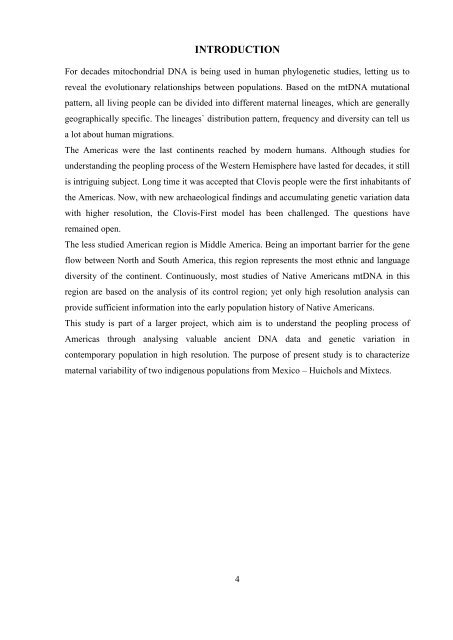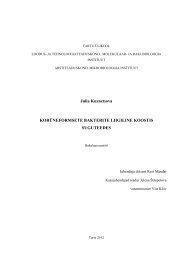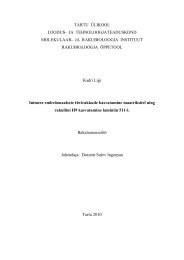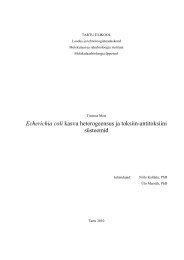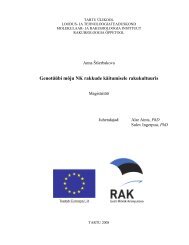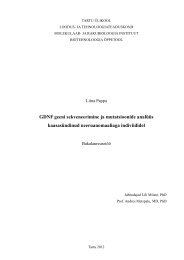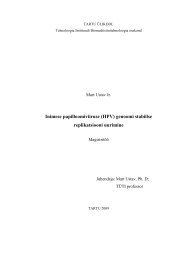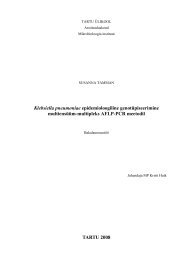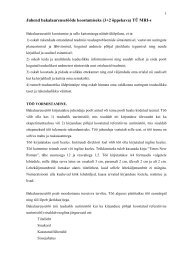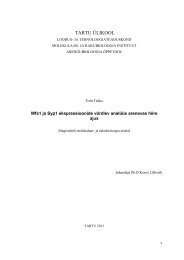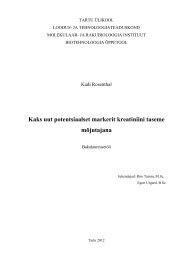Maternal variation in Huichol and Mixtec populations from Mexico
Maternal variation in Huichol and Mixtec populations from Mexico
Maternal variation in Huichol and Mixtec populations from Mexico
You also want an ePaper? Increase the reach of your titles
YUMPU automatically turns print PDFs into web optimized ePapers that Google loves.
INTRODUCTION<br />
For decades mitochondrial DNA is be<strong>in</strong>g used <strong>in</strong> human phylogenetic studies, lett<strong>in</strong>g us to<br />
reveal the evolutionary relationships between <strong>populations</strong>. Based on the mtDNA mutational<br />
pattern, all liv<strong>in</strong>g people can be divided <strong>in</strong>to different maternal l<strong>in</strong>eages, which are generally<br />
geographically specific. The l<strong>in</strong>eages` distribution pattern, frequency <strong>and</strong> diversity can tell us<br />
a lot about human migrations.<br />
The Americas were the last cont<strong>in</strong>ents reached by modern humans. Although studies for<br />
underst<strong>and</strong><strong>in</strong>g the peopl<strong>in</strong>g process of the Western Hemisphere have lasted for decades, it still<br />
is <strong>in</strong>trigu<strong>in</strong>g subject. Long time it was accepted that Clovis people were the first <strong>in</strong>habitants of<br />
the Americas. Now, with new archaeological f<strong>in</strong>d<strong>in</strong>gs <strong>and</strong> accumulat<strong>in</strong>g genetic <strong>variation</strong> data<br />
with higher resolution, the Clovis-First model has been challenged. The questions have<br />
rema<strong>in</strong>ed open.<br />
The less studied American region is Middle America. Be<strong>in</strong>g an important barrier for the gene<br />
flow between North <strong>and</strong> South America, this region represents the most ethnic <strong>and</strong> language<br />
diversity of the cont<strong>in</strong>ent. Cont<strong>in</strong>uously, most studies of Native Americans mtDNA <strong>in</strong> this<br />
region are based on the analysis of its control region; yet only high resolution analysis can<br />
provide sufficient <strong>in</strong>formation <strong>in</strong>to the early population history of Native Americans.<br />
This study is part of a larger project, which aim is to underst<strong>and</strong> the peopl<strong>in</strong>g process of<br />
Americas through analys<strong>in</strong>g valuable ancient DNA data <strong>and</strong> genetic <strong>variation</strong> <strong>in</strong><br />
contemporary population <strong>in</strong> high resolution. The purpose of present study is to characterize<br />
maternal variability of two <strong>in</strong>digenous <strong>populations</strong> <strong>from</strong> <strong>Mexico</strong> – <strong>Huichol</strong>s <strong>and</strong> <strong>Mixtec</strong>s.<br />
4


